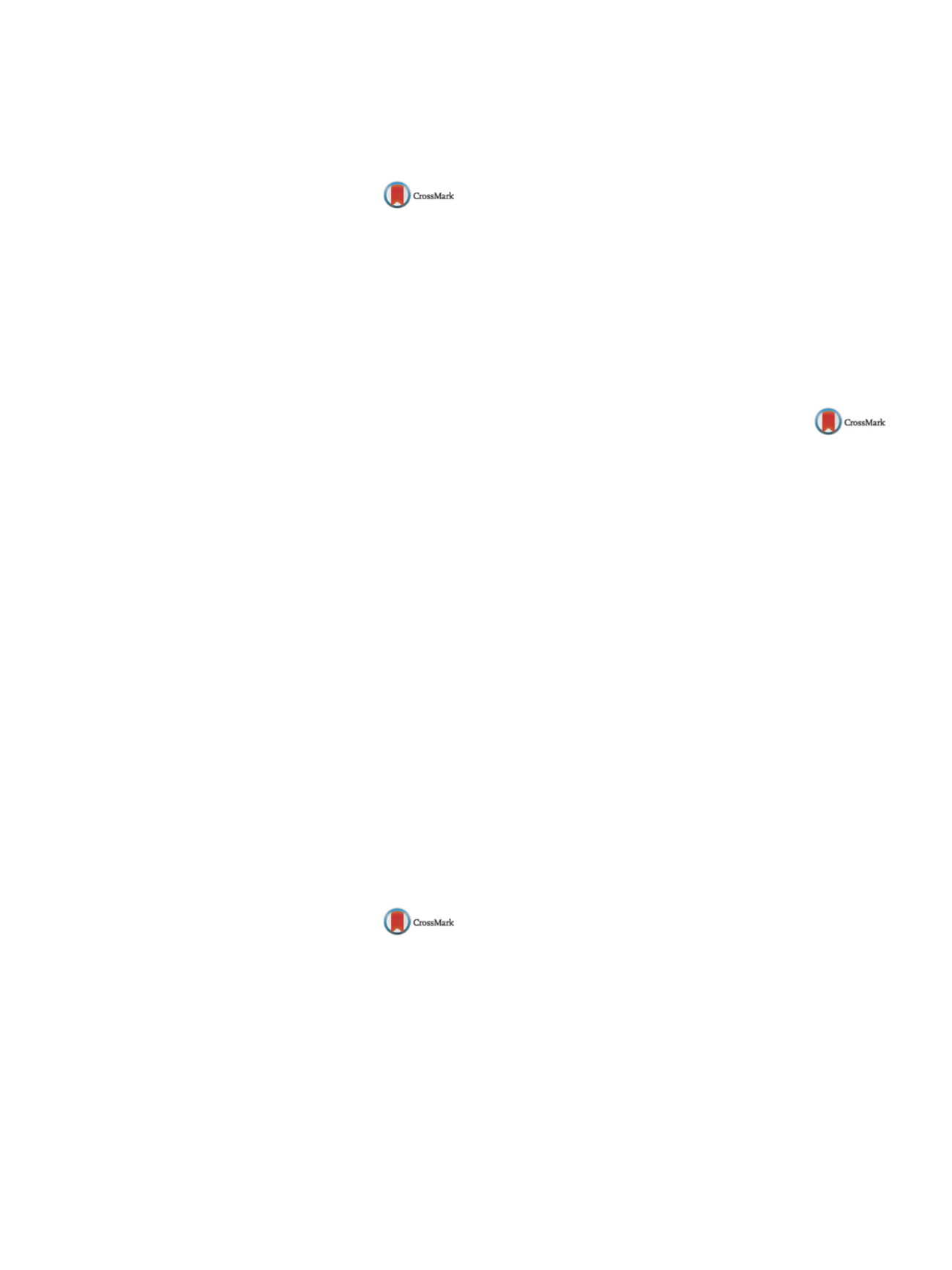

S838
25th European Congress of Psychiatry / European Psychiatry 41S (2017) S772–S846
Disclosure of interest
The authors have not supplied their decla-
ration of competing interest.
http://dx.doi.org/10.1016/j.eurpsy.2017.01.1650EV1321
Predictors of transition to psychosis
in individuals at clinical high-risk for
psychosis
M. Skuhareuskaya
1 ,∗
, O . Skugarevsky
21
Republican Mental Health Research Center, Psychiatry department
N
o
27, Minsk, Belarus
2
Belarusian State Medical University, Psychiatry and Medical
Psychology, Minsk, Belarus
∗
Corresponding author.
Objective
Clinical high risk (CHR) for psychosis state is charac-
terized by presence of potentially prodromal for schizophrenia
symptoms. The aim of this study was to assess the predictors of
transition to first psychotic episode.
Methods
The study included 123 CHR subjects. All the sub-
jects were characterized by the presence of one of the group
of criteria: (1) UHR criteria, (2) basic symptoms criteria and (3)
negative symptoms and formal thought disorders (FTD). The pres-
ence of FTD in clinical high-risk individuals was assessed with
methods of experimental pathopsychology. The mean length of
follow-up was 26 months (SD 18). All subjects were males, mean
age = 20.2 (SD: 2.1). We examined the subjects’ performance using
the Cambridge automated neuropsychological test battery. We
applied survival analyses to determine associations between a
transition to psychosis and sociodemographic, clinical and neu-
rocognitive parameters. To determine which items are the best
predictors, Cox regression analyses were applied.
Results
The psychosis developed in 39 subjects (31.7%). Global
assessment of functioning, positive symptoms, blunted affect,
social isolation, impaired role function, disorganizing/stigmatizing
behavior, basic symptoms (thought pressure, unstable ideas of
reference), neurocognitive parameters (visual memory and new
learning, decision making, executive function) significantly influ-
enced the transition to psychosis. A prediction model was
developed and included unusual thought content (Wald = 12.386,
P
< 0.0001, HR = 2.996), perceptual abnormalities (Wald = 4.777,
P
= 0.029, HR = 1.43) and impaired role function (Wald = 1.425,
P
< 0.028, HR = 4.157).
Conclusion
Clinical measures are important predictors for tran-
sition to psychosis in high-risk individuals.
Disclosure of interest
The authors have not supplied their decla-
ration of competing interest.
http://dx.doi.org/10.1016/j.eurpsy.2017.01.1651EV1322
Diogene syndrome: About two clinical
cases
H. Snene
EPS Ville Evrard, psychiatry, France
Introduction
Diogenes syndrome was first described in 1975 by
Clark to characterize the behavioral disorder in the elderly involv-
ing neglect of personal and domestic hygiene and a hoarding
disorder or hoarding. He is regarded as a psychiatric disorder in its
own right in the DSM V and declines criteria compulsive hoarding
disorder (“Hoarding Disorder”). The condition is under diagnosed
or its prevalence is important from 3.3 to 4, 6%.
Objective
Study through two clinical, etiologic and psychopatho-
logical diogenes syndrome (DS) and the main diagnostic and
therapeutic difficulties.
Case n
o
. 1
Mrs. L. is 57 years old, without children and with a
degree in political science. She was taken back by his partner for
behavioral disorder type of pathological accumulation of objects.
His home has become inaccessible due to the accumulation of mul-
tiple stacks of magazines and other items. The meeting allowed to
objectify an incurique presentation, delusional and hallucinatory
syndrome.
Case n
o
. 2
Mrs. BH aged 67, retired, widowed for 17 years. She
lives alone after the suicide of his daughter. This would be followed
by breast cancer. The patient was admitted following a report of
neighbors who discovered that Mrs. BH, isolated for months, sleep-
ing in the garden of her home saw the unhealthy state of the place
and the accumulation of waste.
Conclusion
Diogenes syndrome is heterogeneous, covering mul-
tiple medical, psychiatric and social situations. Its pathogenesis
remains poorly understood and its management refers to any clin-
ician can examine ethical questions the legitimacy of its actions.
Disclosure of interest
The authors have not supplied their decla-
ration of competing interest.
http://dx.doi.org/10.1016/j.eurpsy.2017.01.1652EV1323
Moment-to-moment associations
between emotional disturbances,
aberrant salience and persecutory
delusions
S.H. So
1 ,∗
, A.K.C. Chau
1, E. Peters
2, J. Swendsen
3, P. Garety
2,
S. Kapur
41
The Chinese University of Hong Kong, Psychology, Hong Kong, Hong
Kong S.A.R
2
King’s College London, Institute of Psychiatry- Psychology and
Neuroscience, London, United Kingdom
3
University of Bordeaux, Aquitaine Institute for Cognitive and
Integrative Neuroscience, Bordeaux, France
4
University of Melbourne, Faculty of Medicine Dentistry and Health
Sciences, Melbourne, Australia
∗
Corresponding author.
Introduction
Experiences of depression and anxiety are common
among patients with persecutory delusions. It has been theorized
that emotional disturbances affect the formation and appraisal of
persecutory delusions directly and possibly via increasing the sense
of aberrant salience.
Objectives
Using a time-lagged analysis of experience sampling
data, this study modelled the role of momentary levels of nega-
tive emotions and aberrant salience in maintaining persecutory
delusions in patients with active delusions.
Methods
Clinically acute participants with at least a mild level
of persecutory delusions were assessed using experience sampling
method (ESM; 7 entries per day for 14 days) and clinical rating
scales. ESM data of participants who completed at least 30 ESM
entries were analysed by using multilevel regression modelling.
Results
The final sample consisted of 14 participants, with a total
of 1161 momentary observations. Time-lagged analysis revealed
that both negative emotions (
B
= 0.125,
P
= .009) and aberrant
salience (
B
= 0.267,
P
<
.001) predicted an increase in persecutory
delusions in the next moment. Conversely, persecutory delusions
did not predict change in negative emotions or change in aber-
rant salience in the next moment (
ps
>
.05). Negative emotions also
predicted an increase in aberrant salience in the next moment
(
B
= 0.087,
P
= .009).
Conclusions
Our results supported the hypothesis that both
negative emotions and aberrant salience exacerbate persecutory
delusions, rather than being merely the sequelae of the symp-
toms. Our results suggested both direct and indirect (via aberrant
salience) pathways from negative emotions to persecutory delu-
sions.
Disclosure of interest
The authors have not supplied their decla-
ration of competing interest.
http://dx.doi.org/10.1016/j.eurpsy.2017.01.1653

















